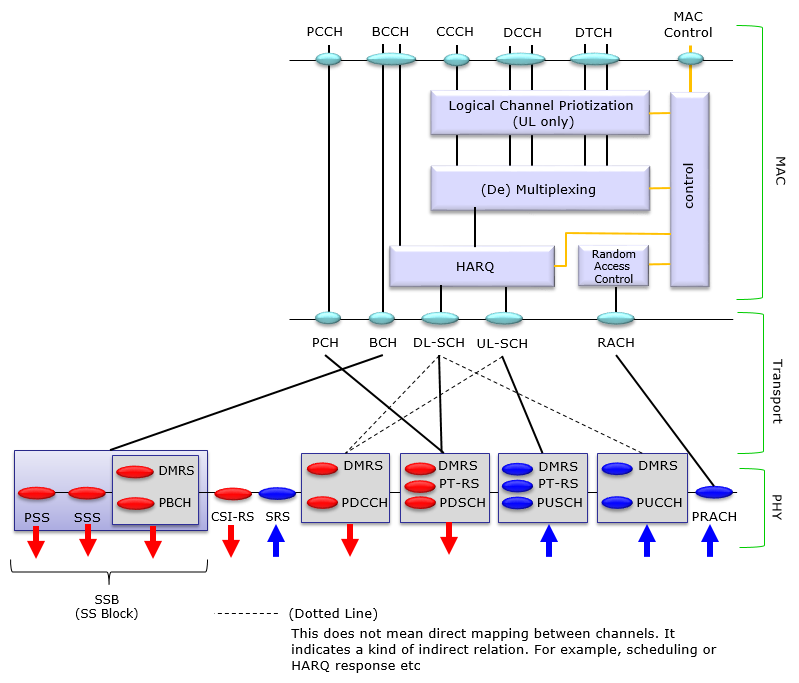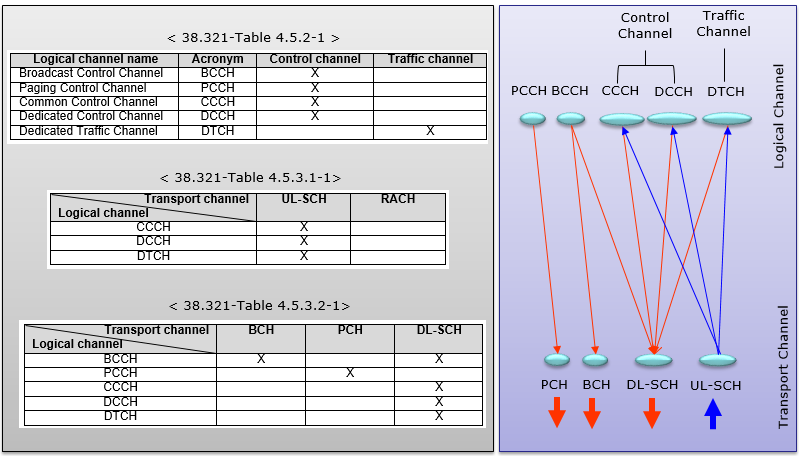|
|
||
|
Following illustration is the 5G/NR channel mapping from MAC layer through PHY layer based on 38.321 and 38.211. In this page, I would try to give you only the big picture of the whole channel structure in NR, I would not get into the details of each type of channel processing separately. It is too big topics to be described in single page. I would write separate pages for channel mapping and channel processing for each different channels. If you give it just a brief glance, you would think it is same as LTE. In terms of MAC layer mapping (MAC to Transport mapping), I also would say it is same as LTE. However, if you take a little bit of closer look at PHY layer, you would notice some difference from LTE PHY channel and PHY signal. Followings are the list of difference of NR PHY channel and LTE PHY channel.
Channel Mapping at MAC LayerThe illustration shown above may show you a little bit detailed picture of MAC process, but it may not be so clear about the channel mapping unless you follow through each lines very carefully. In terms of channel mapping, the tables in 38.321 would be clearer and simple to understand and my illustration to the right would be even more clear and intuitive :).
As you see, most of channels from Logical channel to Transport channel is one-to-one or many-to-one relation, but BCCH case it maps to BCH and DL-SCH. What does this mean ? Does this mean that a BCCH message maps both to BCH and DL-SCH simultaneously ? No. It means some BCCH data maps to BCH and some BCCH data maps to DL-SCH. If you are familiar with LTE, you would know there are largely two types of BCCH in LTE. One is MIB and the others are SIBs. MIB goes through BCCH-BCH path and SIBs go through BCCH-DL SCH path. NR would use the same pattern of channel mapping.
Reference[1]
|
||

